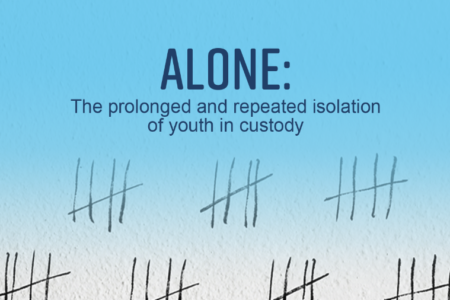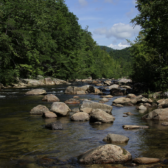In and Out: The politics of water storage on the Canadian Columbia River system
Since 2005, Eileen Delehanty Pearkes has researched and explored the natural and human history of the rivers of the upper Columbia River Basin.
She speaks frequently at conferences and symposia throughout the Basin on the history of the Columbia River Treaty and its effects on Basin residents. She has recently completed a manuscript titled A River Captured – history and hydro-electricity in the upper Columbia Basin.
An American by birth, Pearkes has been a resident of Canada since 1985 and Nelson since 1994. She has written many articles and several books that explore place and its cultural meaning.
The Geography of Memory, a history of the landscape and indigenous people of the upper Columbia watershed published in 2002, remains a Kootenay classic.
Pearkes has agreed to help The Nelson Daily readers understand the importance of the Columbia River Treaty to the region with another edition of River Talk.
Today the river historian continues the topic, focusing on storage reservoir system above the international boundary.
It’s been H-O-T hot for the past few weeks in the upper Columbia mountains, driving most of us close to the water.
In winter, we grouse and complain about the weather and its impact on our lives. Summer is our time to gloat, for we live in a region of abundant, accessible water – lakes, rivers, creeks, and reservoirs abound. People are water-skiing, floating, fishing, kayaking, paddle-boarding and generally enjoying every drop of the cold, clean water that is our region’s trademark.
And yet, ….not all of our water is pristine, nor is it all as accessible as it could be. A few weeks ago, I wrote an Op-Ed for the Spokesman Review based in Spokane, Washington.
My focus was the storage reservoir system above the international boundary.
At the time of the CRT negotiations, Americans involved in the deal-making seemed largely unaware of the sacrifices that would be made by Canadians living on the upper Columbia and Duncan Rivers.
The primary Canadian negotiators were based in Ottawa and Victoria: to them, the valleys slated to be flooded were nothing more than points on a map.
Other than those living around the Lake Roosevelt Reservoir near the inernational boundary, Americans today are similarly uninformed about the difference between the mid and lower Columbia River dams and the storage dams at the top of the system.
As the U.S. and Canada ease toward the 50-year mark of the treaty (whose mid-life birthday will be in just over a month), we can be assured that any changes to the CRT will only be enhanced by communication and understanding between residents as well as politicians.
As a student of our region’s troubled water history, I went through several years of anger and teeth-gnashing about the wholesale loss of communities and ecosystems in our region as a result of the dominance of damaging CRT storage reservoirs.
People were treated very badly, and ecosystems may never recover. Though I remain troubled by how and why the decisions were made in the 1950s and 60s, I have realized that bitterness and anger won’t create progress, or heal river systems.
This summer, I mark most early mornings by a plunge into the water of the West Arm near Balfour. I can feel the pull of current, a natural result of the narrowing of Kootenay Lake into its west arm. There is an unseen current, too, that of how and why water is drawn through the system for hydro-electricity.
Upstream, out of sight and beyond the south arm of Kootenay Lake is Libby Dam in Montana, run by the American Army Corps of Engineers. The CRT gave the U.S. authority to build Libby, and in doing so handed over most of Canada’s control of the upper Kootenay River to American interests.
Regardless of its effect on those living in Canada on the storage reservoir – upstream in the Rocky Mountain Trench or downstream on Kootenay Lake or its West Arm, the U.S. controls the flow of water.
When U.S. endangered species protection required changes to Libby’s operations that would support sturgeon and other fish, residents who lived downstream on Kootenay Lake and its West Arm were affected. This led to the signing of a Libby Coordination Agreement between the two countries, one that acts in a way like an addendum to the CRT itself. You can read more about this agreement on the Columbia Basin Trust’s website.
Libby Dam’s storage reservoir backs 67 kilometers into Canada and this year, reached its full pool in the last week of July.
North and slightly east of my swimming spot is Duncan Dam, one of the main storage reservoirs created by the CRT. No power is produced at Duncan, which controls water flowing out of the Duncan River valley into Kootenay Lake.
Duncan Reservoir is reaching full pool about now – early August, as the CRT dictates. Any overflow from that maximum level will be released to run west through the system, past Nelson and several dams on the lower Kootenay River.
I stroke steadily against the current for a few minutes, getting nowhere, before I relax and let it pull me gently downstream toward the shoreline. I am a strong swimmer, yet humbled by the power of this gently moving water. I emerge thinking about the political undercurrents of water use agreements, the pull of humanity that is often obscured by the remarkable, cooling beauty of our river systems. These rivers are not natural, but controlled for human interest.
Let’s all pay as much attention as we can to the rivers and their operations as we watch our governments position themselves for potential CRT re-negotiations in the years ahead.
Let’s remember where we live….and what we love.
See Previous Column.


























